Progress on Gender Equity Requires Commitment and Accountability

Through programs like Women in Science & Engineering (WISE) and movements such as HeForShe, Stony Brook University maintains a longstanding commitment to gender equity that has led to more women in leadership positions, STEM majors and male-dominated industries.
In 2014, Stony Brook University joined the UN Women’s HeForShe movement’s IMPACT 10x10x10 global initiative as one of 30 key enterprises across three sectors — countries, corporations and universities — that prioritized advancing gender equity. Stony Brook was one of just two U.S. institutions cited as an IMPACT Champion. This was an honor, but also a mandate — to “drive change from the top” — that challenged the leaders of the major research university to foster the success of women, improve outcomes and work tirelessly toward gender equity.
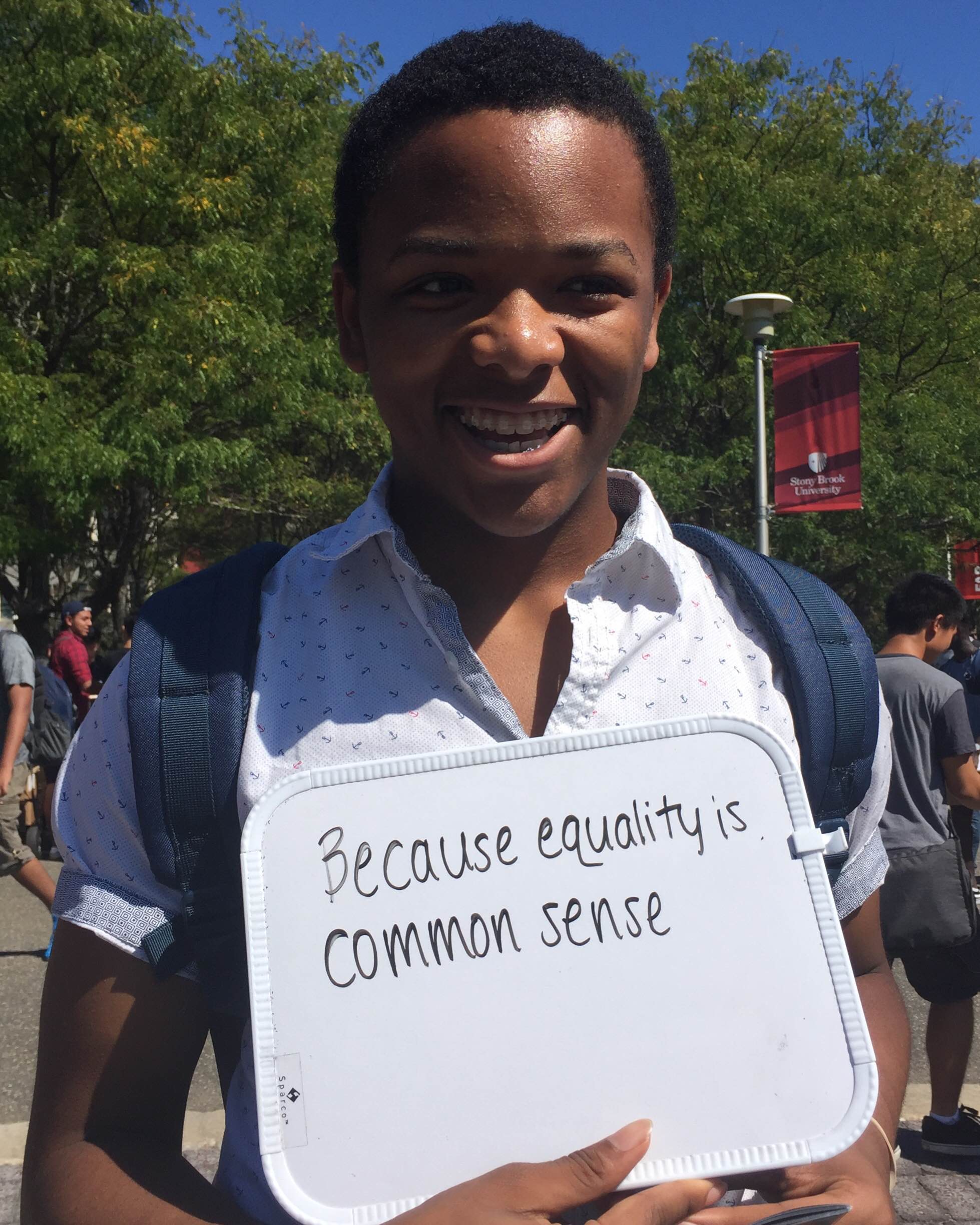
The HeForShe tour came to the Stony Brook campus.
The HeForShe tour came to the Stony Brook campus.
This led to a host of new initiatives, including a required workshop on gender awareness and inclusion for all new students as part of their orientation experience; a partnership with athletic and Greek organizations to educate students on equity, consent and healthy choices; and a vibrant HeForShe student organization. In addition, first-year students taking their required first-year seminar — a 14-week, one-credit course. A 2019 UN report cited Stony Brook’s progress in opening doors for and supporting women in STEM majors.
Seven years later, the university remains steadfastly committed to the HeForShe movement. On May 10, 2021, Stony Brook President Maurie McInnis will be a panelist in a streaming HeForShe summit in which she will detail the university’s efforts to engage the leaders of tomorrow — students — and focus on the critical aspects of gender equality.
Although the university is ever mindful about keeping an eye on the future, it also has taken steps to reshape the present, starting with its leadership. In 2020, the University Council — composed of Stony Brook’s senior academic and administrative leaders — achieved gender equity. This represents a 27-percentage point increase in women in those roles. The proportion of women in full-time faculty positions is up 7 points, to 45 percent.
“Lasting change happens when leaders take the first step and hold themselves accountable. But the work continues. Stony Brook’s commitment to gender equity has been designed into every stage of the campus life experience.”
Sejal Mehra learned this when she arrived at Stony Brook as a first-year student in 2017. Once an aspiring lawyer, Mehra had discovered a coding immersion program, thanks to her mother, and never looked back.
“I loved it!” she says. “I was like, ‘Coding is everything. I need this.’ I’ve always been good with tech, setting things up, fixing things, but I had never seen that as a career. But my mom kind of always knew and supported me.”
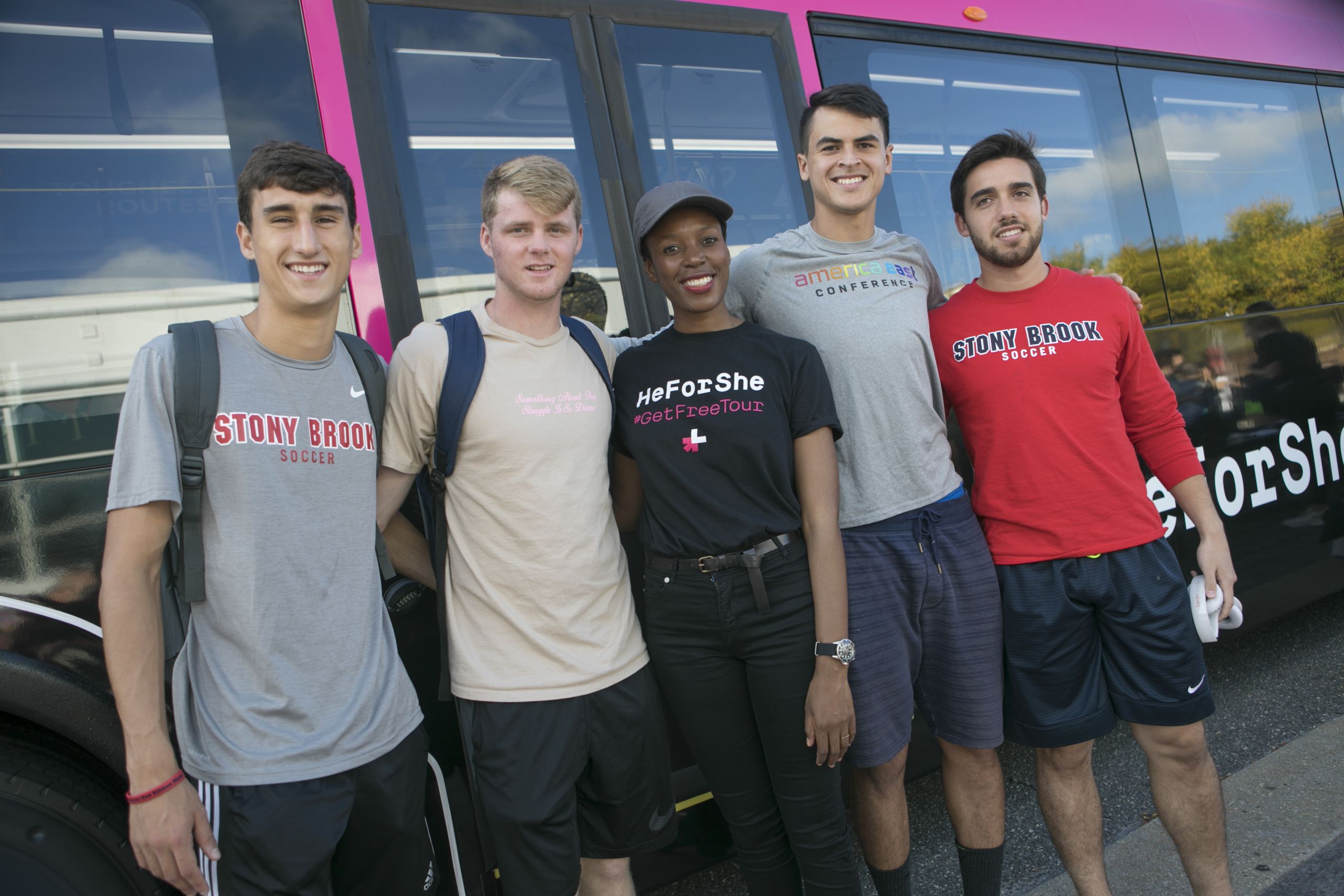
HeForShe’s Stony Brook chapter strives to further gender equality both on campus and globally.
HeForShe’s Stony Brook chapter strives to further gender equality both on campus and globally.

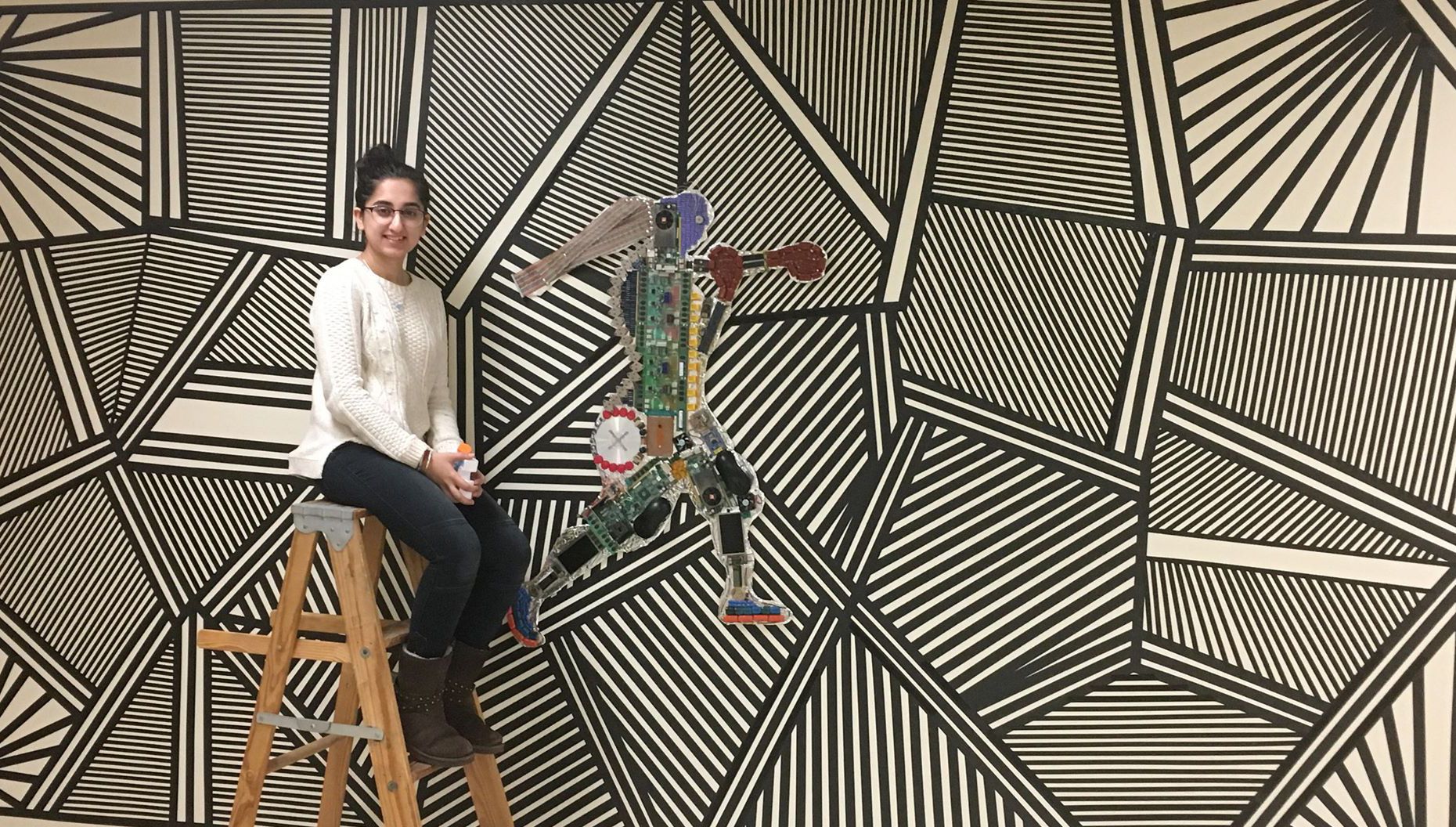

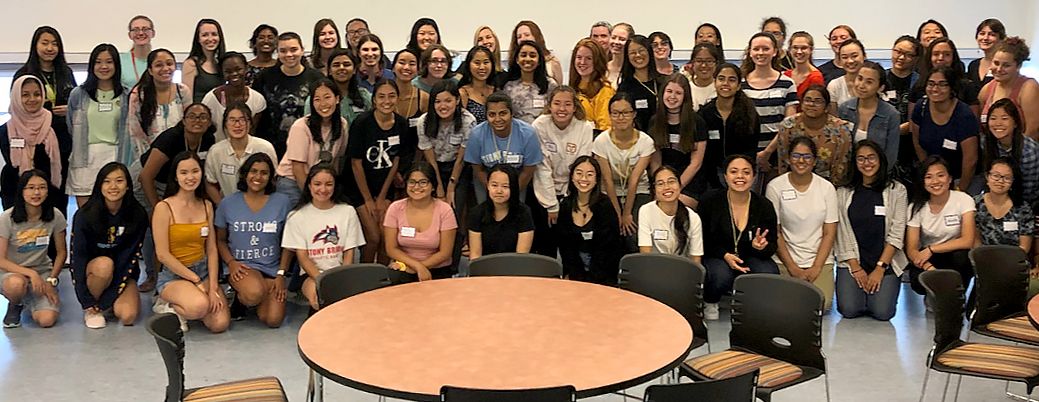

A commitment to gender equality is front and center on campus.
A commitment to gender equality is front and center on campus.

Mehra’s Luna the Future mural illustrates challenges faced by women.
Mehra’s Luna the Future mural illustrates challenges faced by women.

HeForShe brings a global conversation on gender to students.
HeForShe brings a global conversation on gender to students.

The WISE program offers opportunities for female undergraduates.
The WISE program offers opportunities for female undergraduates.
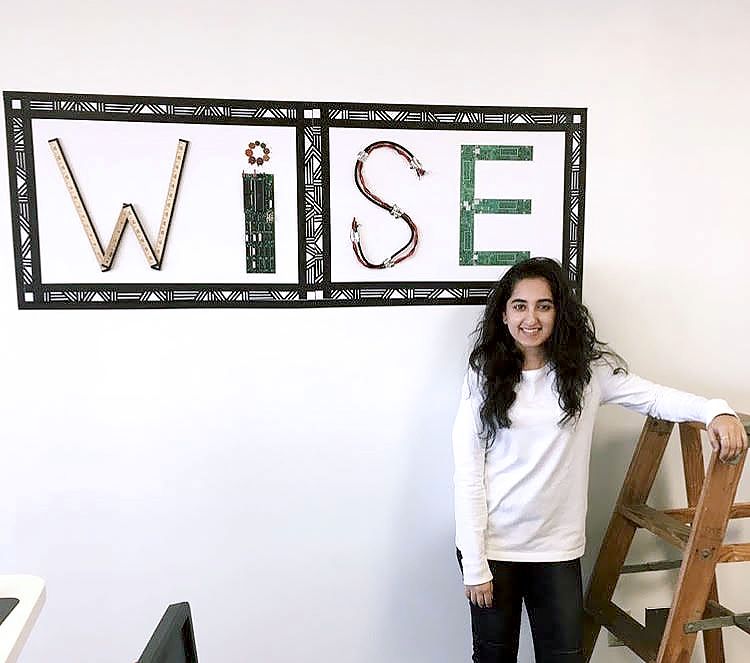
Mehra found solidarity and a culture of support in the WISE program.
Mehra found solidarity and a culture of support in the WISE program.
Once on campus, Mehra found herself surrounded by support. The university’s Women in Science & Engineering (WISE) program helped her join a small group of other young women also planning to study computer or electrical engineering. The program also connects women across STEM disciplines, such as physics, civil engineering and other programs in which women are underrepresented. By combining the vast resources of a major research university with the close bonds of a small community, WISE ensures that female students in STEM programs know that they are not alone.
WISE is a flagship program of the university to recruit, retain and empower women in science and engineering. The WISE program now enrolls 416 students, substantially increasing the number of women in engineering and other STEM fields on campus. The one-year retention rate for entering WISE students was 95.6 percent, compared to 90 percent for the general population. The WISE program now reaches high school and middle school students as well, through a cooperative of Long Island school districts.
“Mentoring is critical for the students that transition from a high school or completely different environment to come to campus."
“Many of these students are in disciplines where they represent only 10 or 15 percent. And many are first-generation students, and they might not have gotten support in their households or from counselors at their high schools. So the mentoring program is crucial. It can be a game-changer for them," says Bugallo.”
But it’s more than just reaching out to individual students, Bugallo stresses. In keeping with the HeForShe commitment, Stony Brook has fostered a culture of support that permeates the entire campus. She cites the undergraduate and graduate students who, like Sejal Mehra, become mentors themselves.
“It’s like a mentoring pipeline,” she says. And it doesn’t stop at graduation. Alums return frequently for formal and informal events, and the Women in STEM Leadership Program serves early- and mid-career STEM researchers (as well as Stony Brook researchers and graduate and postdoctoral students).
Briana Brown, a 2013 graduate now working as a program manager at GE Aviation, credits Stony Brook with preparing her not only through academics, but through its holistic, clear-eyed approach to supporting women embarking on careers in male-dominated fields.
“There have been plenty of times where there are no other women in a meeting I’m in,” she says. “Or I’m the only Black person and the only woman. Stony Brook did a really great job of bringing in people from outside to talk about that. Because sometimes in college you’re in a bubble, and it’s really helpful to have someone from an industry come in and be like, ‘This is what it’s going to look like when you step into a room to lead a meeting.’”
“Those are the sorts of things that I was taught in college that were not a part of any curriculum,” Brown says. “And all of those skills that I learned were instrumental to me securing a job, and then coming in more prepared than someone else who would have just graduated from college.”
In addition to speaking to Stony Brook classes, Brown has started two foundations — in New York, where she grew up, and in Miami, where she has worked — to help more young people from underrepresented groups pursue their academic and career dreams.
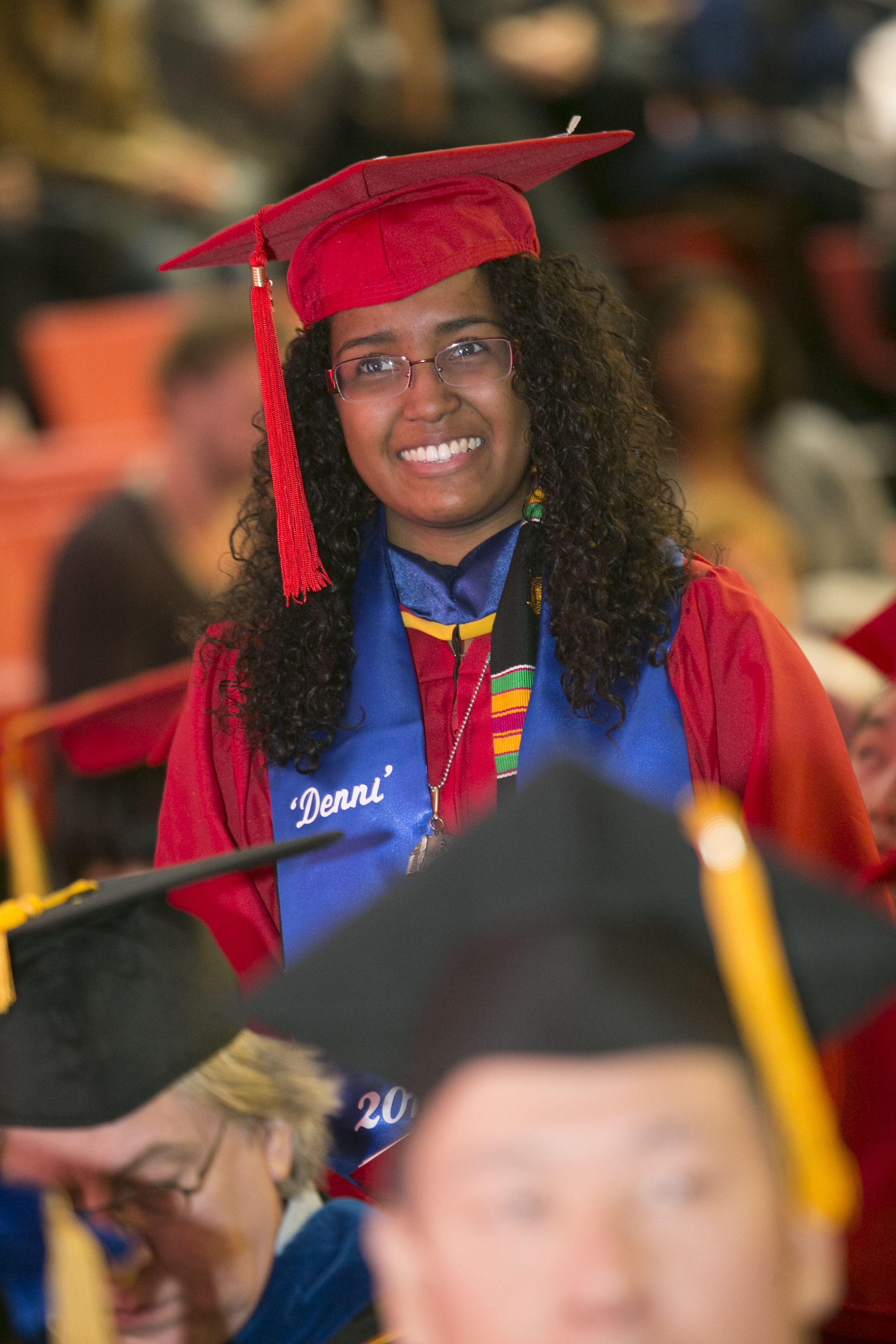
Alumna Briana founded two foundations to assist those from underrepresented groups.
Alumna Briana founded two foundations to assist those from underrepresented groups.
Faculty have also joined the effort. By speaking to students in the WISE honors curriculum (which focuses on career development, experience, and leadership skills) and inviting students to participate in their research projects, they are doing their part to motivate and uplift women in STEM. Similarly, Stony Brook offices like Undergraduate Research & Creative Activities, the Center for Inclusive Education and the Career Center have become valuable partners.
Relationships, and a commitment to continuous improvement, Bugallo explains, form the foundation of the entire effort.
“I know that not all institutions can provide the same infrastructures or the same resources,” she says. “But simple activities like talking to their students and having plain conversations about their challenges, or to provide guidance about opportunities, that’s how it starts, and that’s what matters.”
This content was paid for and created by Stony Brook University. The editorial staff of The Chronicle had no role in its preparation. Find out more about paid content.



